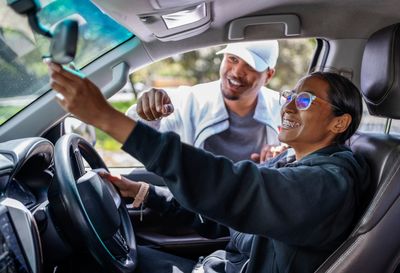Environmental Mismatch and the Mirror Myth: Why Some Instruc

Misguided Instructors
Many experienced drivers who move to Western Australia discover that their instincts from home don’t translate smoothly to local traffic.
One of the clearest examples is overuse of side mirrors combined with poor long-range scanning ahead — a habit born from completely different road conditions.
Unfortunately, a few local driving instructors have inherited or adopted the same habits, passing them on to young learners who deserve better.
🧠 The Habit’s Origin
In many parts of the world, traffic is extremely dense, lanes are narrow, and two-wheelers constantly weave through traffic.
Drivers learn to survive by checking their side mirrors every few seconds to guard against scooters appearing beside them.
That constant mirror-checking becomes a reflexive safety behaviour — and when those drivers migrate to Australia, the reflex comes with them.
🚕 Anecdotal Example
Ever notice your rideshare or Uber driver glance into the side mirrors constantly — or brake a little too late when traffic ahead suddenly stops?
That’s environmental mismatch in action: a skill that made perfect sense in one country becoming a liability in another.
On Perth’s wider, faster roads, the risk isn’t a scooter in the blind spot — it’s a car five vehicles ahead suddenly braking.
Excessive mirror focus robs drivers of the long-range awareness that keeps traffic flowing smoothly and safely.
🚗 Why It Backfires in WA
Western Australian roads reward forward scanning, not constant mirror vigilance.
When drivers fixate on side mirrors:
- Their forward awareness shrinks to the car immediately ahead.
- They react late to developing situations in the distance.
- They brake reactively instead of pre-emptively.
The result is delayed response, jerky flow, and the constant feeling of “catching up” to traffic rather than anticipating it.
🪞 Adjusting the Focus
Good defensive driving means adapting observation habits to local conditions.
1. Prioritise forward vision.
Your eyes should spend most of their time scanning well ahead — reading intersections, brake lights, and pedestrian movement.
2. Use mirrors for context, not comfort.
Check them when something changes — speed, direction, or road type — not on a timer.
3. Keep awareness balanced.
Quick glance, quick return. Mirrors tell you what’s around; the road ahead tells you what’s next.
The Mirror Myth: When ‘Observation’ Becomes Overload
Some instructors in WA still teach outdated mirror rituals borrowed from overseas traffic environments.
The result? Learners who look busy but don’t actually see anything important.
🧩 The Problem With Mirror Overload
A few instructors love to see constant head movement — it looks like good observation from the passenger seat.
But that habit produces nervous learners flicking their eyes like metronomes, trying to impress examiners with motion instead of understanding.
It creates students who:
- check mirrors for the sake of checking,
- miss brake lights five cars ahead,
- and react rather than anticipate.
That’s not defensive driving — that’s visual panic.
🚦 The Lost Art of Looking Ahead
True observation is prediction, not paranoia.
Learners should be taught to:
- read the flow of traffic ahead,
- notice changing lights early,
- plan their braking distance, and
- spot potential hazards before they exist.
That’s what separates calm, consistent drivers from the twitchy mirror-watchers churned out by what we’ll politely call quantity-over-quality schools.
🎓 A Gentle Reminder for Fellow Instructors
Observation drills are useful, but without context they create noise.
If your student can recite a mirror sequence perfectly but can’t see the red light three cars ahead, something’s gone wrong in your lesson plan.
Examiners mark safe, consistent planning — not frantic choreography.
The goal isn’t to look busy; it’s to think ahead.
🏁 A Simple Rule of Thumb
“Use mirrors for context, not comfort.
What saves you in Manila or Mumbai can fail you in Midland.”
Environmental mismatch and mirror overload are both easy to fix — all it takes is awareness, a little retraining, and an instructor who values calm observation over mechanical repetition.
By recognising these habits, we can help new Western Australian drivers adapt safely, drive confidently, and think ahead — the way real defensive driving was meant to be.
This website uses cookies.
We use cookies to analyze website traffic and optimize your website experience. By accepting our use of cookies, your data will be aggregated with all other user data.